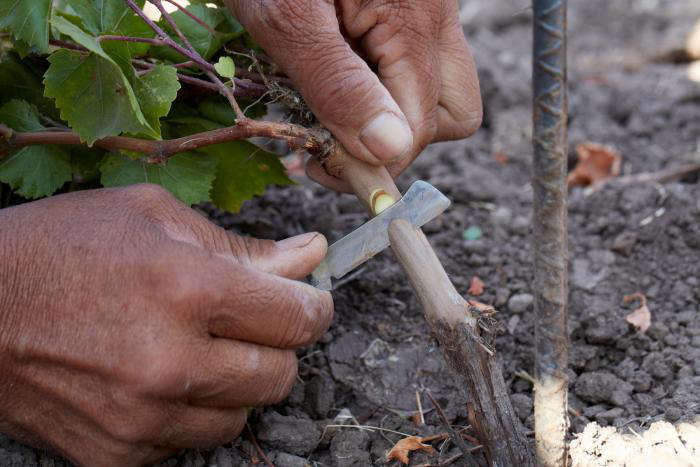You might find it surprising that virtually all grape vines used for wine making are grafted. The top part of the vines, Vitus vinifera, are varietals from Europe. However, they are very susceptible to phylloxera, a North American insect that bores into roots. The American pests have co-evolved with American grapes, which are resistant. The solution, in the US and abroad, is American roots, and European grapes.
Photographs by Marla Aufmuth for Gardenista.

Above: These grapes are pinot noir, and they have been trellised in a cordon style. This allows just enough sun, shade, and air flow. This is also possible to do in your garden or backyard to create a privacy trellis.

Above: Since most vineyards buy their grape plants directly from a nursery, grape grafting tends to be a dying art. However, at Gloria Ferrer Vineyards in Sonoma, the grapes have been grafted by hand. The bump near the base of the trunk shows where the graft took place.

Above: This is an example of a fresh graft, where the bud from one plant is inserted into a branch of a different plant.

Above: Alberto Robledo comes from a family of grafters. His father, brothers, and uncles all mastered this craft, and Alberto used to practice on willow trees as a child. When grafters are needed in Northern California wine country, the Robledos are called.

Above: Alberto demonstrates that the bud must be cut perfectly flat to fit onto root stock.

Above: Then he cuts into the root stock. The nick should be the same size as the bud.

Above: The bud is then pressed into the rootstock until a slight popping noise can be heard. He then wraps it with a rubber band and covers it with dirt. It is uncovered in the spring. If there’s green growth from the graft, a new vine is born. (N.B.: See 55 more images of Wineries in our Gallery of rooms and spaces.)












Have a Question or Comment About This Post?
Join the conversation (0)